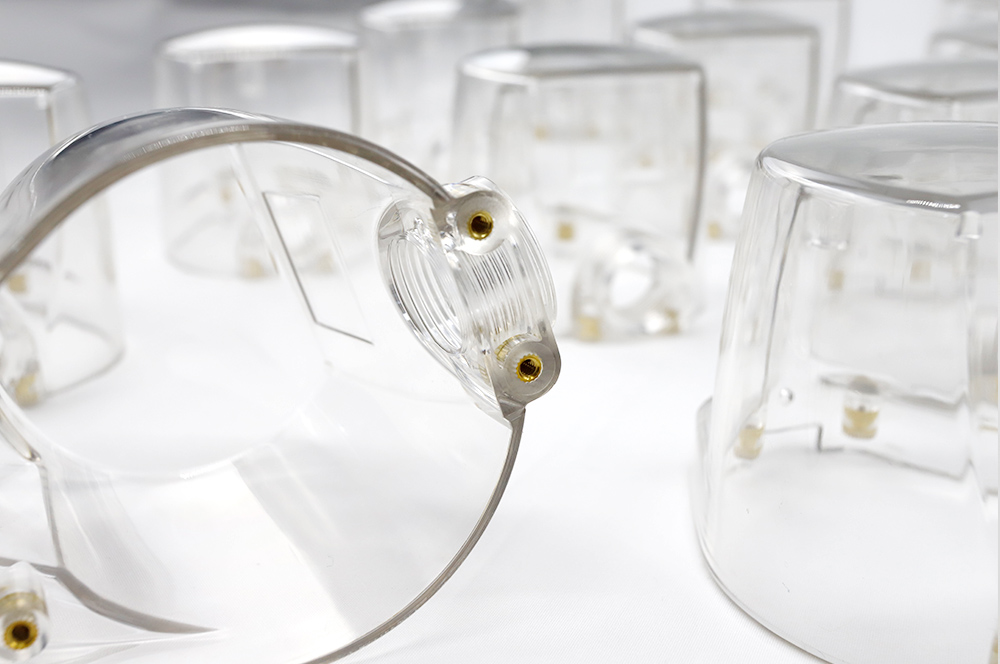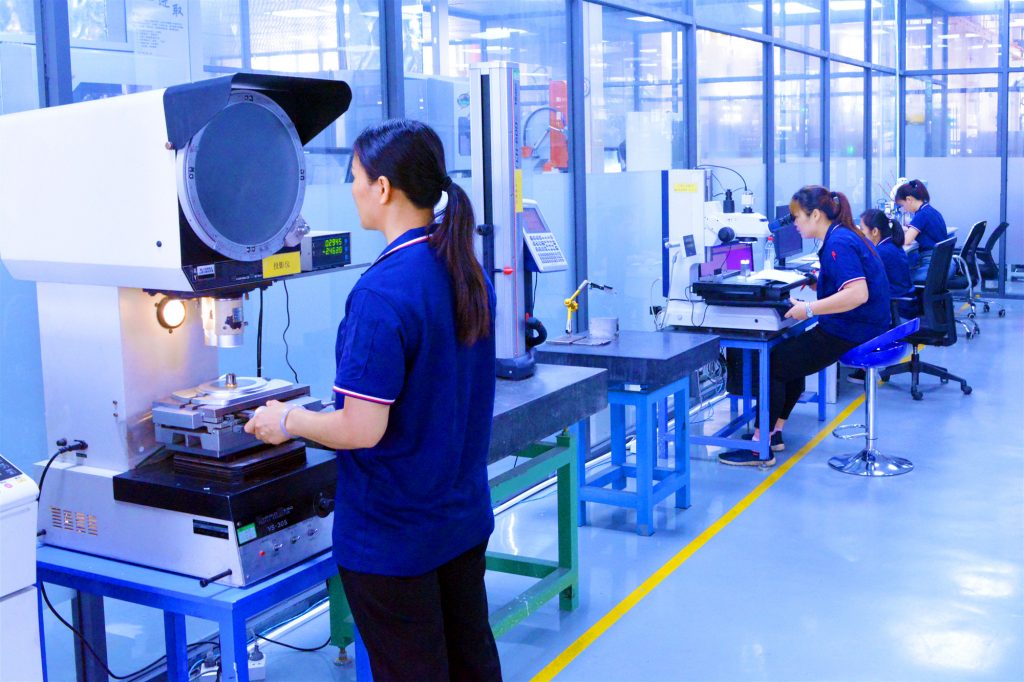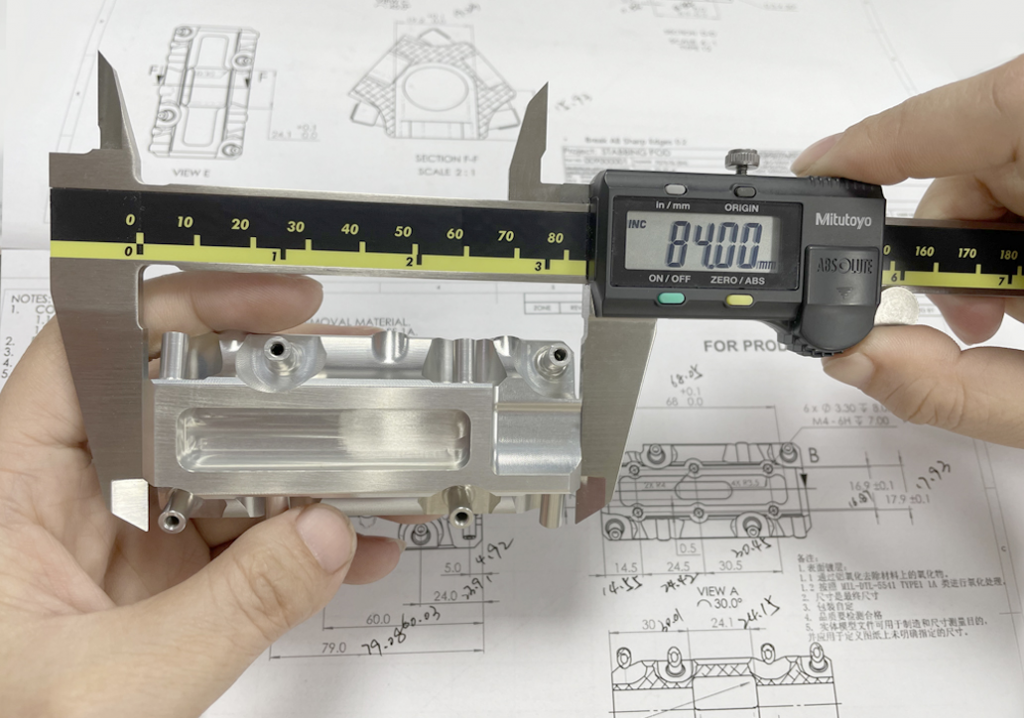Precision Gear Machining – Precision Transmission, Driving the Future

Posted on : July 14th, 2025,By GREFEE
Foreword:
As the core component of all driving machines, gears are extremely widely used in mechanical transmission and the entire mechanical field. Since the Industrial Revolution, extensive research has been conducted on gears, and gear technology has developed rapidly. After hundreds of years of development, modern gear technology has reached perfection, capable of achieving micron-level precision. The gear module can range from 0.004 to 100mm.

Common Gear Materials:
As a common mechanical transmission component, gears are widely used in various industrial fields, and almost all transmission equipment cannot do without them. According to different usage environments, the selection of gear materials varies greatly. At the same time, the selection of gear materials has an important impact on the service life and transmission efficiency of gears. Common steel materials for gears are mainly divided into forged steel, cast steel, cast iron, and other non-metallic materials.

Forged Steel: Forged steel has comprehensive properties. As a gear material, forged steel can make the tooth surface reach high strength and hardness, while the tooth core also has good toughness. After heat treatment, the cutting accuracy can reach level 8. When the diameter of the gear exceeds 400mm, the material is not suitable for forging, and cast steel or cast iron can be used.
When the gear surface HB < 350, it is a soft tooth surface, and common materials are: 40#, 35SiMn, 40Cr, 40CrNi, 40MnB.
When the gear surface HB > 350, it is a hard tooth surface, and common materials are: 45#, 40Cr, 40CrNi.
Cast Steel: Cast steel itself has high strength and can withstand large loads and torques. Cast steel gears are very stable in the process of power transmission, which can ensure the stable operation of gears under high-load working conditions. After heat treatment, the processing performance of cast steel materials is better improved, which is convenient for subsequent processing of gears such as hobbing, gear shaping, and gear shaving to obtain higher dimensional accuracy and surface quality.
Cast steel gears have very good high hardness, wear resistance, and excellent impact resistance, which can minimize gear breakage when instantaneous impact. Therefore, cast steel gears are mostly used as core transmission components, such as automobile engine thrusters, gearboxes, drive shafts, etc.
Cast Iron: Cast iron is also a common gear material, with high strength and hardness and relatively low price. After heat treatment, cast iron gears can further improve their hardness and wear resistance, and are suitable for high-temperature and low-load environments. Due to the high density of cast iron gears, they are heavy in weight, which has a certain impact on transmission efficiency and power consumption.
The core advantages of cast iron gears lie in their economy and applicability. With the characteristics of low cost, easy processing, wear resistance, and shock absorption, cast iron gears are widely used in medium-low speed and light-load mechanical equipment, such as agricultural machinery, light industrial equipment, low-speed transmission systems, and special working conditions.
Other Metal Materials: In addition to the above three common gear materials, gears made of copper alloys, aluminum alloys, or even plastic materials are required in some specific environments. The main factor for choosing these materials is the need for lighter product weight. The greatest advantages of these three materials are that their density is lighter than that of steel, and the friction coefficient is also lower.
For example, many gear materials in mechanical watches use copper alloys, plastic gears are mostly used in toy cars, and when some precision gears require light weight, high strength, and good wear resistance, the advantages of aluminum alloy materials are reflected. For example, aluminum alloy gears well meet the structural requirements of robots. Aluminum alloy gears can minimize their own weight, while ensuring transmission efficiency and friction coefficient, improving the flexibility of robots and reducing the energy consumption of the machines themselves.
Classification of Gears: There are tens of thousands of types of standard gears, but common gears are mainly divided into the following types according to their shapes.
Spur Gear: Spur gears are cylindrical gears installed on two parallel shafts, where one shaft drives the other to rotate. Spur gears are the simplest to manufacture compared to other types and the easiest to meet precision requirements. Their power transmission efficiency is about 95%-98%, making them the most commonly used gears.

Bevel Gear: Bevel gears refer to gears manufactured on a conical surface, which rotate through two intersecting shafts and are often used in equipment that requires movement in two different directions. The power transmission efficiency of bevel gears can reach 98%-99%, so bevel gears are suitable for precision transmission equipment, such as automobile differentials, printing presses, etc.

Helical Gear: The only difference between a helical gear and a spur gear is that the tooth shape on the periphery is helical, and it also belongs to parallel shaft gears. However, compared with spur gears, helical gears can obtain a larger contact ratio, so helical gears have stable load changes and stable power transmission during rotation. Compared with spur gears, helical gears can achieve low noise, small vibration, and are suitable for high-speed rotation and large power transmission equipment. For example, automobile gearboxes and engine timing systems all use helical gears.

Internal Gear: Due to the internal position of its tooth shape, the internal gear is endowed with high bearing capacity and low noise characteristics. The processing method of internal gears is different from other gears, using gear shaping. Internal gears are widely used in planetary gear systems, reducers, automobile transmissions, aerospace, construction machinery, and household appliances. In scenarios requiring efficient and precise transmission, internal gears are irreplaceable key components.

Rack: The rack is usually used in cooperation with a spur gear to achieve transmission in different directions. The rack also belongs to a type of parallel shaft, and the power transmission efficiency is about 98%-99.5%. It is mainly used in long-direction transmission devices, such as the parallel transmission shaft of a printing press.

Plastic Gear: Plastic gears are widely used in the internal parts of various machines such as food processing machines, home appliances, toys, and medical devices. Common materials are POM, nylon, PEEK, etc. The greatest advantages of plastic gears are light weight and high quietness. The disadvantages are that the material will be affected by temperature, humidity, etc., which will affect the product strength and precision. When dimensional accuracy is required, metal materials can be added to the gears to reduce the deformation space.

Worm and Worm Gear: According to the installation position of the gear shaft, the worm and worm gear and the crossed helical gear both belong to the crossed shaft category. The gear with threads cut on a cylindrical material is called a worm, and the gear that meshes with it at a 90-degree shaft angle is called a worm gear. When the two are used in pairs, they are called a worm gear pair. As a small gear that can obtain a large speed ratio, it is usually used in speed reduction devices, such as reducers, elevators, robots, etc.

Spiral Gear: It also belongs to the crossed shaft gear category and is named a spiral gear because of the threads on the gear. It produces less impact vibration and low noise during transmission, and can achieve relatively stable transmission. Therefore, it is very suitable for core components such as automobile differentials and drives.

Gear Standards: International gear standards cover all aspects of gear manufacturing and application, and these standards are crucial to ensuring the standardization and normalization of gear products.
DIN Standard: DIN is the German national standard, usually used in gear engineering for light industrial applications. The DIN standard mainly specifies the requirements for gear dimensions, pressure angles, modules, materials, etc., and classifies and marks them, with the characteristics of completeness, systematics, and high standardization.
AGMA Standard: AGMA is a standard formulated by the American Gear Manufacturers Association, applicable to gear engineering and manufacturing. The AGMA standard covers many aspects of gear design, manufacturing, testing, and application, including dimensions, quality, geometric features, materials, strength, precision, etc.
ISO Standard: ISO is a standard formulated by the International Organization for Standardization, widely used in mechanical manufacturing and process standardization. The ISO standard comprehensively regulates gear design, manufacturing, and application, including gear dimensions, geometric features, materials, strength, precision, and other aspects.
JIS Standard: JIS is a standard formulated by the Japanese Industrial Standards, mainly used for gear manufacturing and assembly. The JIS standard specifies the dimensions, basic parameters, manufacturing, and installation of gears, with the characteristics of systematics and standardization.
ANSI Standard: ANSI is a standard issued by the American National Standards Institute, applicable to gear manufacturing and application. The ANSI standard specifies gear design, manufacturing, and installation in detail, covering gear geometric features, dimensions, materials, strength, precision, and other aspects.
Gear Production Equipment: According to the different shapes of gears, the equipment required to produce gears is also different. According to the shape of the threads, it is mainly divided into internal and external teeth, such as hobbing machines, gear shaping machines, gear milling machines, gear shaving machines, and gear grinding machines.
Hobbing Machine: It is one of the most widely used gear processing machine tools, which can cut spur and helical cylindrical gears, and can also process worm gears, sprockets, etc. The hob is installed on the hob spindle to rotate, and the tool holder can move vertically along the column guide rail, driven by the indexing worm gear pair to rotate, forming a generating motion together with the hob’s motion.

Gear Shaping Machine: It uses a gear shaper cutter to process straight and helical gears and other tooth-shaped parts by the generating method, mainly used for processing multi gears, internal gears, etc. The gear shaper cutter of the gear shaping machine makes an up-and-down reciprocating motion and performs a generating motion with the workpiece at the same time, thereby cutting out the gear tooth shape.

Gear Milling Machine: Generally, it is processed by a forming milling cutter according to the indexing method, mainly used for processing instrument gears with special tooth shapes, etc. When milling gears, the milling cutter rotates, and the workpiece is indexed according to certain indexing requirements, and each tooth groove is milled in turn.

Gear Shaving Machine: A high-efficiency machine tool for finishing gears with a gear-type shaving cutter, mainly used for finishing cylindrical gears after hobbing or gear shaping, which can improve the tooth shape accuracy and surface quality of gears and reduce the surface roughness of the tooth surface.

Gear Grinding Machine: A high-precision machine tool for finishing the hardened cylindrical gear or gear tool tooth surface with a grinding wheel, used for grinding hardened gears, which can correct the deformation of gears during the heat treatment process, improve the accuracy and surface quality of gears, and is often used for processing high-precision gears.

MORE BOLG
Insert mold in injection mold service
What are advantages and disadvantages of Zinc alloy and Aluminum alloy?
Inspection standards for injection molded partappearance
How to judge the quality of your plastic products?
Inspection standards for CNC machining
To ensure that your products are 100% qualified
Categories

Try GREFEE now,for free
We keep your uploaded files confidential and secure.



